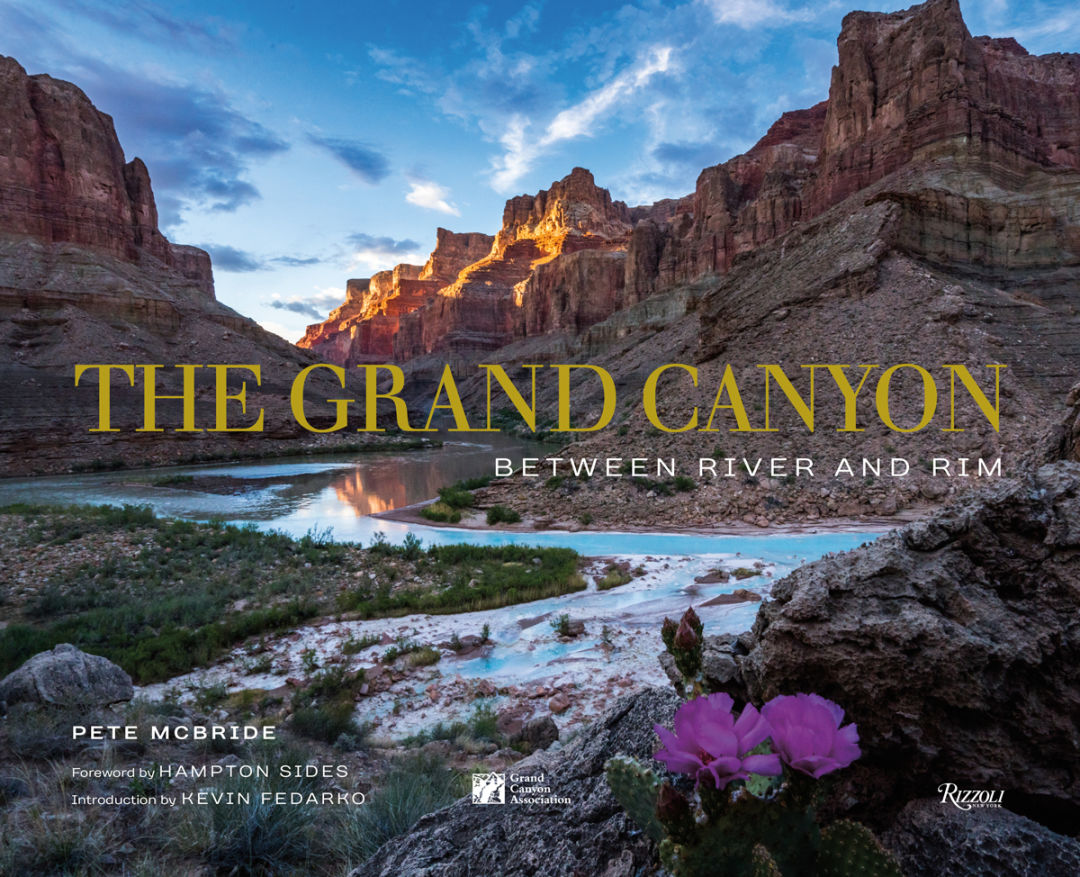Local Pete McBride Has a New Book About the Grand Canyon

In Pete McBride’s new large-format book, The Grand Canyon: Between River and Rim (Rizzoli), there’s a photograph of a man’s calf, suntanned skin and sinewy veins rising above a hiking shoe and a low gaiter, and a spiny jumping cholla cactus attached right in the center. “Hiking the length of the canyon on foot is daunting,” reads the caption.
Daunting may be an understatement. The hike—from the Grand Canyon’s eastern edge below Lees Ferry to the Grand Wash Cliffs some 750 miles later—almost killed McBride. He began the trek in 2015 with friend and writer Kevin Fedarko (who contributed the book’s intro); they completed it in eight stages over more than a year.
No stranger to adrenaline-inducing adventure, McBride—an award-winning photographer, writer, and filmmaker who lives in Basalt—has traveled the world in search of stories that highlight the paradox of our love affair with the natural world. Fedarko and McBride, who was loaded with 50 pounds of photo equipment, started hiking on a superlatively hot day in September. A few days later, they temporarily retreated when McBride’s body salt became severely depleted.
As much as he wanted to go where few photographers have gone before, McBride was also driven by his innate desire to show the toll that human activity takes on the Grand. Proposed new hotels and a tram to the canyon floor, increased uranium mining nearby, and incessant air tours all threaten its integrity. Proceeds from the book benefit the nonprofit Grand Canyon Conservancy (formerly known as the Grand Canyon Association).
No single trail or marked network leads from one end of the canyon to the other, but a few other intrepid adventurers had patched together a route. Fedarko and McBride—after greatly reducing what he carried—consulted some seasoned locals to help them navigate a trek roughly the length of California and with more than 100,000 vertical feet of elevation gain/loss, 100-degree temperature swings, unstable rock, and—because the route often traveled high above the river—scarce water. It was an exercise in minimalism, says McBride, as the trip tended more toward survival than photography. “This wasn’t about focusing my lens on things. It was about tuning my awareness on sounds—on wildlife and birds—because I knew that’s where I could find water.”
Of course, the Grand Canyon is one of the most spectacular landscapes in the world, but it is much more than that, too. One of McBride’s favorite photo spreads is a meditation on a dead cactus. “I simply couldn’t take another panorama, so I started focusing on the world at my feet,” he says.
Notes Flagstaff local and friend Mathieu Brown, who accompanied the pair on parts of the hike, “It was often subtle light, a unique site, or just the right composure of scenery that delivered brightness to Pete’s day. We all gained from that by recognizing simple, small things that would lift our spirits and prompt laughter or conversation.”
Both a work of fine art and an avowal on the power and wisdom of place, McBride’s book compellingly conveys the urgent need to protect the Grand Canyon, now and for the future.













































